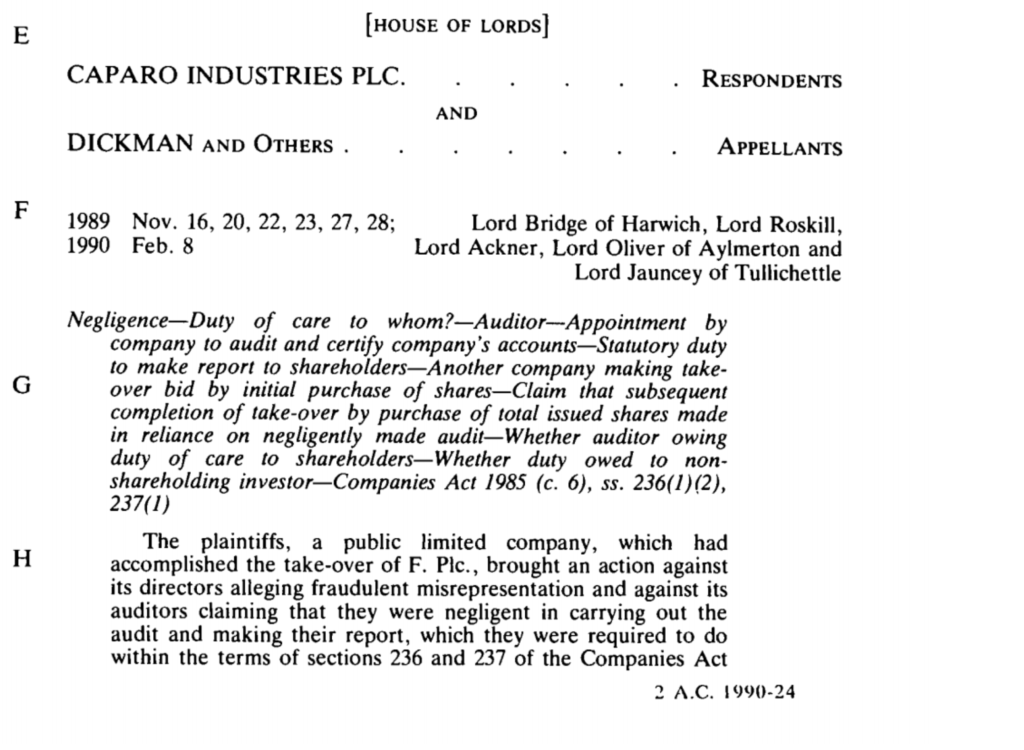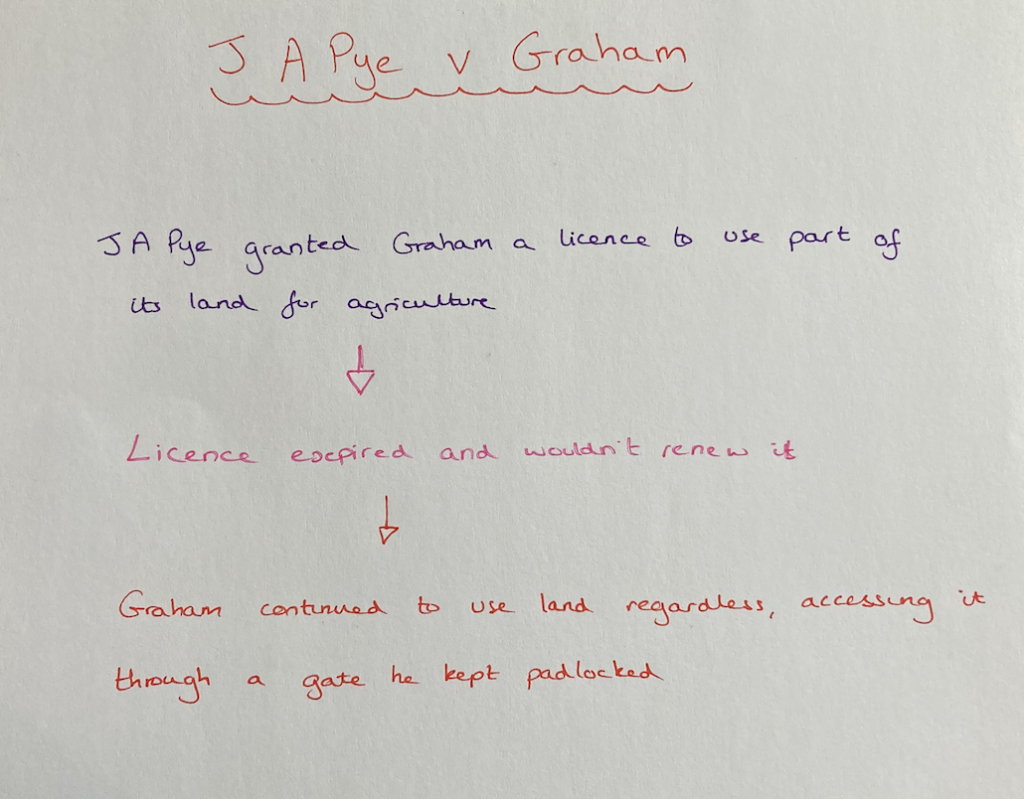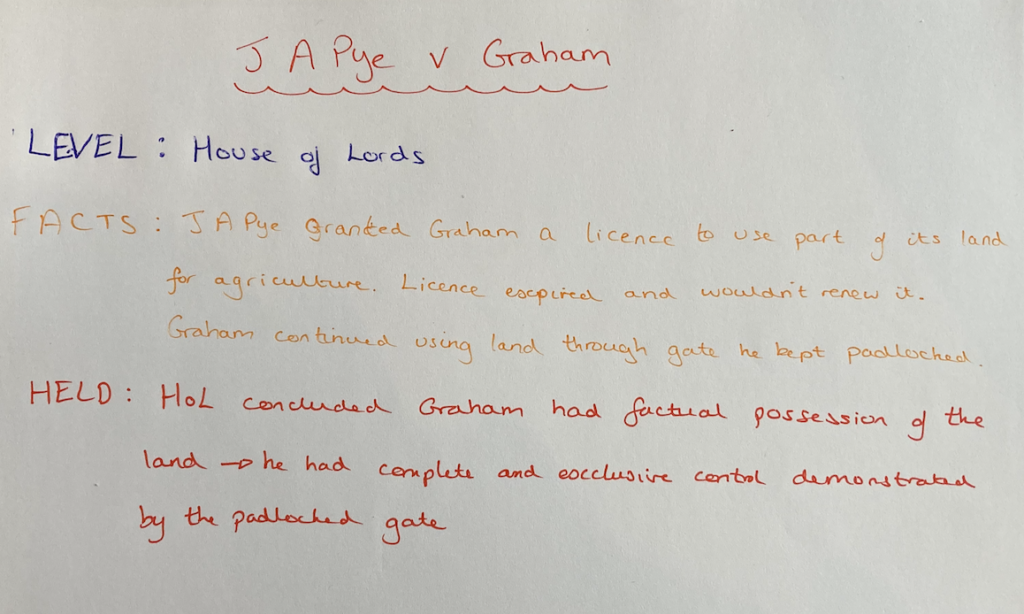Table of Contents
Why is it that nobody teaches you how to read legal cases as a law student? You get chucked in right at the deep end by law professors, who automatically expect you to know how to navigate these complicated passages of legal text and analyse them effectively. Fortunately, there is a structured process that you can use to help you quickly find all the relevant details you need and summarise those cases into a few short bullet points, which I shall demonstrate in this article.
🫀 The Anatomy of a Legal Case
You can’t expect to know how to read a law case without knowing what each part is trying to tell you.
I remember in my first year not even knowing what a law case was even supposed to look like. My law professors literally gave me no information about what to expect. I was completely in the dark. So let’s take a look at the law report for the case of Caparo Industries v Dickman [1990].
If you have access to the full law report – which you should do if you’re at university through your law library or sites such as Westlaw and LexisNexis – you should find something that looks a little bit like this:

At the top of the page the names of the two parties can be found. In this instance we can see the names of Caparo Industries and Dickman as the parties to the case. If this was a criminal case, one of the parties would be the Crown denoted by the letter R (which stands for Regina when the monarch is feminine and Rex when the monarch is masculine).
You can also find other important piece of information in the law report, including the court in which the case was heard (the House of Lords), the law report citation ([1990] 2 AC 605), a number of catchwords that refer to the key legal areas referenced in the case (e.g. negligence, duty of care, etc.), and a list of the judges who were sitting in that particular case (here we have Lord Bridge, Lord Roskill, Lord Ackner, etc.). If you were looking at a case since 2001 you will often find a netural citation too, which is independent of the law report series and refers specifically to the court and case number (e.g. something like [2008] UKHL 13, which would be a reference to a case in the UK House of Lords).
💀 The Headnote
In law reports, the headnotes is going to be your best friend when it comes to helping you quickly digest and understand what a particular case is trying to tell you.
A headnotes is essentially just a short summary written by a law reporter, telling you who the parties are, what the main issues at hand were, and what was eventually decided. It’s a really simple way for you to get an overview of the case and get to grips about the most contentious points before diving into the bulk of the case itself.
However, there are some things that you need to be careful or aware of.
Firstly, only cases that have been reported in law reports will show headnotes. If you are dealing with a case that is unreported – meaning it may be too recent or not important enough to be published – then you are going to have to actually read the case yourself. This shouldn’t be too much of a problem because all the juicy details of unreported cases are usually found within the opening few paragraphs.
Secondly, not all headnotes are of the same quality. Some are pretty detailed and offer you a comprehensive understanding of what happened in the case, but some aren’t. So never treat them as sufficient; you still ought to read the entire case before deciding whether or not the headnote provides an accurate summary of the law.
For example, in the case of Young v Bristol Aeroplane [1944] the headnotes says that the Court of Appeal must not follow a decision of its own that is inconsistent with a decision of the House of Lords. However, the judgement of the case actually says is that the Court of Appeal is bound by one of its previous decision unless that previous decision is inconsistent with a subsequent decision of the House of Lords.
So do make sure you treat headnotes with a bit of caution.
🦦 The Fact Flow Chart
Perhaps the most useful thing you can do with the headnote is to create a fact flow chart, which I find really useful to refer back to when reading through the legal judgements. Often there is so much going on in a case it is easy to forget who did what, what the contenious points of the case are, and what facts are actually relevant to the issue at hand.
Your job then is to simplify the complexity of the facts by making a logical and ordered summary of events. This is crucial if you wish to understand the legal reasoning within the judgement. To give you an example of how you could do this, check out my fact flow chart for the case of J A Pye V Graham [2002].

As you can see, the fact flow chart is very simple and follows the events from start to finish in chronological order. I can now quickly refer back to these facts as I read through the judgement of the case.
When determining whether or not a particular fact is legally relevant, my rule of thumb is to decide whether or not altering the fact would have altered the legal reasoning such that the outcome of the case would have been different. If altering the fact would have altered the case, then this fact is highly relevant. If not, it’s perhaps best to leave it out.
📥 What Do You Want? Ratio & Obiter
Everything up to this point should be quite quick, taking you no more than about 10 minutes. Your job now is to check out the judgement itself.
But to do this properly you need to ask yourself an important question: What do I want to get from the case? Am I interested in the ratios (i.e. the main legal reasonings behind the decision of the court) or am I more interested in the obiter (i.e. anything that’s not aprt of the main legal argument)? Or maybe I am interested in both?
Ratio Decidendi
If your focus is on establishing the ratio of a case (which is perhaps most likely for those of you studying tort or criminal law), then you can focus your attention on the words of the leading judgement.
It can be pretty tricky to separate ratio from obiter at the best of times, but focusing on the leading judgement (the judgement that all the other judges agree with) helps you to more accurately pinpoint where the ratio is. Judges aren’t particularly helpful at saying what is ratio, nor are there any guidelines to help point it out, but it’s a skill you will definitely pick up as you read more cases.
Once I’ve read the leading judgement, I find it useful to summarise the ratio into 1 or 2 sentences, because this shows I have understood their comments well if I can do this. It also makes your life a lot easier when it comes to revising the cases at the time of your exams.
Obiter
If you want more than just the ratio, then unfortunately you have little choice but to read the entire judgement. The headnote won’t help you either, because that is purely focused on legally material facts and the ratio itself.
To help you out, you are more likely to find obiter in the dissenting opinions of the judges, where explanations extend beyond that which is necessary to decide the outcome of the case, and where a judge explains they would have decided a case different had the facts or precedent been different.
Either way, try to write no more than 1 sentence on the relevant obiter from each judge to keep things simple for yourself later down the line.
🔑 Case Summary
Having got all the relevant information from the case, you want to ensure you have a structured set of notes.
Using no more than half a page of A4 paper, you want to write down the level of the court (e.g. the House of Lords, Supreme Court, etc.) so you know the authority of the decision, the legally relevant facts, and what was ultimately held (e.g. the legal reasoning, interesting dissenting judgements, and important obiter).

Alternatively, if you want to encode these cases into your long term memory, I’d highly recommend instantly turning this information into flashcards using an App such as Anki. If you want to read a little bit more about how I used this exact process to memorise all my legal cases, then make sure you check out my article on How I Memorised Everything in Law School.
🎉 Conclusion
Law cases aren’t as complicated or as confusing as you may have first thought. Headnotes are perhaps one of the most underappreciated aspects of law reports that many law students don’t even know exist and breaking the legal cases you read into a few short bullets is important to ensure you can remember & recall these cases in your exams.

